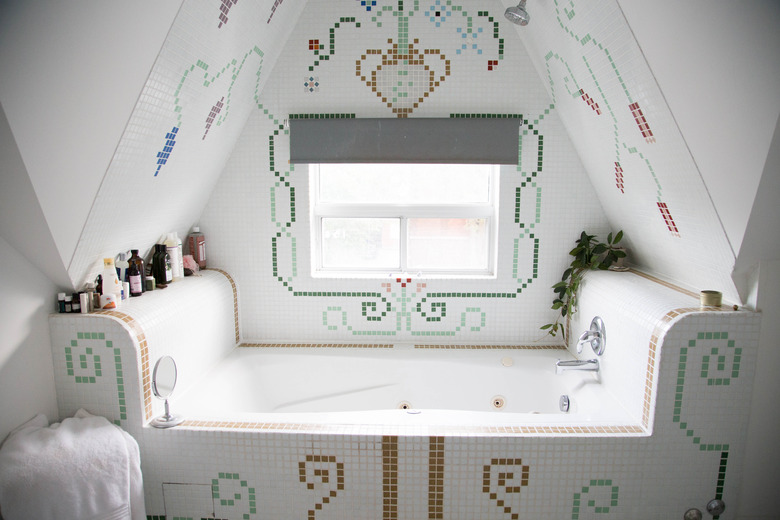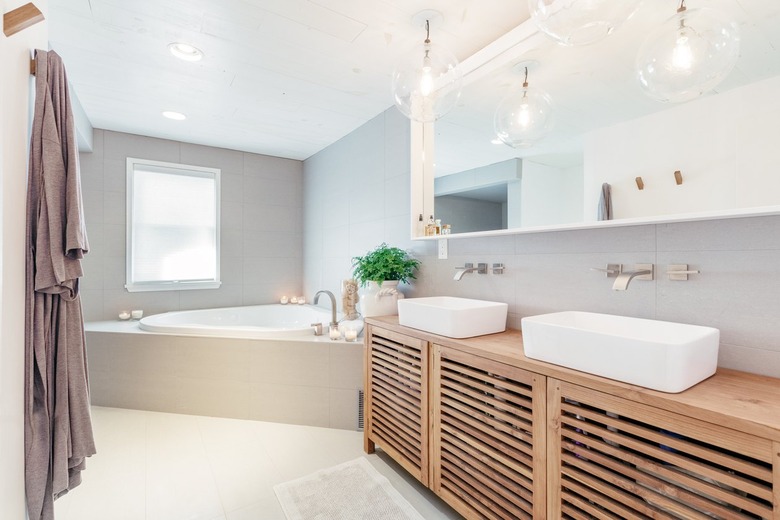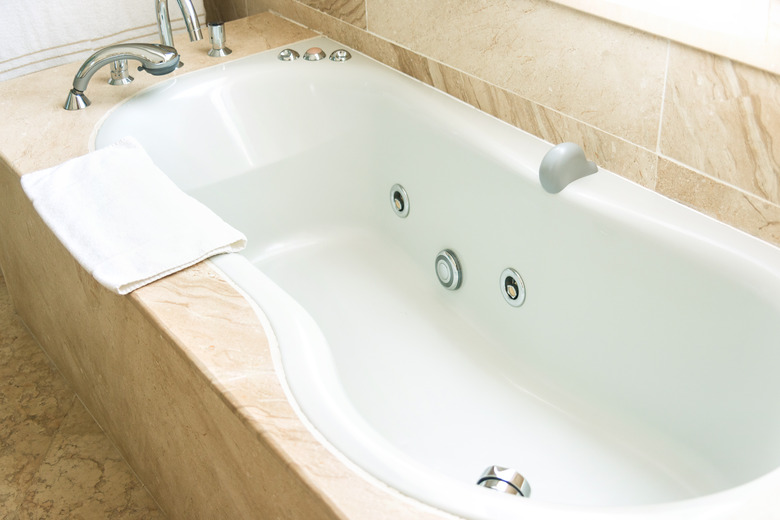Whirlpool Tubs And Air Baths: A DIY Homeowner's Guide
If you're looking for a luxurious, relaxing soak, a jetted whirlpool tub or air bath might be a better pick than a regular tub. You can choose from a number of different shapes and sizes and several different types of materials. Many of today's units also have extra features, such as lighting and music options. Although a whirlpool or air tub might cost more than a regular bathtub, you may want to consider the upgrade.
Keep in mind that whirlpools and air baths each provide a slightly different experience. Compare some of the individual features to make your choice, including any required maintenance, the noise of the motor and whether you're looking to unwind or get help for sore muscles. It helps to be aware that companies like American Standard offer combo massage systems that feature a mixture of the two bathtub types if you can't decide between the two tub types.
The Whirlpool Tub and the Air Tub
The Whirlpool Tub and the Air Tub
A whirlpool tub has jets and uses water to provide a massaging action to various areas of the body while soaking. The number of jets varies from unit to unit, and typically, the direction and/or flow intensity can be adjusted. Body areas that are typically targeted include the hips, back, feet and legs. Many people find that this type of bathtub helps soothe aching muscles and provides a therapeutic effect. Because of the motor, certain models can be rather noisy, so some people may find that it hampers relaxation.
Some whirlpool baths are the same size as a standard bathtub, which is great for rooms with limited space. Other options may be quite a bit larger, with shapes ranging from an oval to a triangle. There are corner tubs, alcove tubs, drop-in tubs and freestanding whirlpool units. Some models may require a deck to be built around them. Tub materials range from cast iron to fiberglass to acrylic.
The air bath is a more recent addition to the lineup of bathroom choices. As the name implies, these tubs don't rely on streams of water to produce an effervescent effect; they use jets of air. While not as powerful as the water-jetted systems, these bathtubs do produce a very relaxing, enjoyable bathing or soaking experience. Compared to whirlpool tubs, they tend to have many more jets, and depending on the unit, these can sometimes be adjusted in intensity and direction as well.
Similar to whirlpools, air tubs come in an assortment of shapes, materials and sizes. Many people enjoy an air bath as a form of hydrotherapy and prefer them to the stronger water jets. Air baths are not as high maintenance as a whirlpool bath. Since the jets use air instead of water, they don't need to be flushed and can simply be cleaned as you would with a regular tub.
Whirlpool Tub and Air Bath Materials and Configurations
Whirlpool Tub and Air Bath Materials and Configurations
In addition to the tub style and shape, materials are another factor to consider when selecting and installing an air tub or whirlpool bath. Each surface has its own advantages and disadvantages.
Take cast iron as an example. This material is heavy and difficult to move, and it may even require additional framing to make sure it is safe to install. That said, cast iron tubs are extraordinarily durable, and they also tend to retain heat better than other bathtub materials. Because of this, they are also expensive.
Fiberglass tubs are popular because they are lightweight and easy to maneuver. They also tend to be the least expensive option. The downside to this kind of bathtub is that the panels are fairly thin and not that strong. Also, the finish can crack, scratch and fade. A gel coat helps protect the surface, but it eventually wears.
Acrylic tubs are a good alternative. They tend to have a midlevel price point and hold up a bit better than fiberglass. These tubs don't scratch as easily as fiberglass and will usually last longer.
Before purchasing, pay attention to the drain location for the tub to make sure it will work well with the framing and plumbing in the bathroom area. Some may have a center drain or left drain (as opposed to a right drain), which might not work in certain spaces depending on how things lay out. Also, be aware that buying an air bath or whirlpool tub means building in access to the motor.
Some of the custom additions to whirlpools and air baths can include things such as LED lighting, built-in pillows, contoured arm rests and seats and even speakers and Bluetooth capability. Certain companies even make walk-in units that boast a quick drain for easy use. Larger tubs are also available for use in the bathroom. Most of these are two-person tubs and not the larger type of freestanding hot tub usually seen outdoors.
Installation Basics for Whirlpool Tubs and Air Tubs
Installation Basics for Whirlpool Tubs and Air Tubs
Much of the work that is involved with installing a whirlpool tub or air bath is the same as putting in a regular tub, such as making sure the current framing is able to handle the weight of the tub (with water), soldering pipes where needed and installing the drain and water lines. Depending on the style of whirlpool or air tub, there may also be additional framing involved, such as for a drop-in tub that needs a deck built around it or a cast iron bathtub that needs reinforcement due to its weight.
It's important to remember that many of these tubs have different space requirements than regular tubs. Although some may be the same size, many are larger or are shaped differently, which can affect the layout of the bathroom. Also, keep in mind that all of these units will need to have the motor access panel accessible, so make sure to check the local code for specifics and include that extra space when mapping out the details.
Special consideration needs to be given to the electrical needs of these units. Some may have an in-line heater that keeps the water warm as it circulates. If so, it will require an additional electrical circuit. This means that two circuits will need to be installed: one for the motor and one for the heater, both with ground-fault circuit-interrupter protection. The manual will provide exact amp requirements for both the motor and the heater, but they usually range from 15 to 20 amps. Because of the intricacy of the electrical requirements, it's best if a professional handles the installation of a whirlpool tub.
Whirlpool and Air Tub Maintenance
Whirlpool and Air Tub Maintenance
Whirlpool tubs require regular jet cleaning to keep them from building up grime and mildew. Kohler recommends flushing its units twice a month (or more) for five to 10 minutes. Kohler suggests a mix of warm water, household bleach and powdered automatic dishwashing detergent but check with the individual manufacturer to be sure you are using the suggested method for best results. Each has its own method.
Many whirlpool brand names have added new technology to help stop mold/mildew buildup, such as American Standard's EverClean collection or the CleanLine antimicrobial plumbing system that comes standard on Jacuzzi-brand jetted tubs. These advances have helped, but whirlpool jets will still require a little extra attention. Also, since the jets are used to circulate water, using oils or sudsy products is not recommended.
Both air tubs and whirlpool baths also require basic tub care that is the same as any other bathtub. The kind of care will depend on the surface material.


